The new generation – The new E-MOUNTAINBIKE Theory of Evolution
Subcultures, individuals and new categories herald the entrance of a new era for eMTBing. Let’s meet the hybrid of hybrids. Flick through the following pages to uncover the most exciting developments and trends for the new decade.

Your time is limited, so don’t waste it living someone else’s life. [Steve Jobs]
These days, society dictates that every minute, every individual and every task has to be optimised – from free time, to holidays, to staying up to date with Instagram feeds. It sucks. And you know why? Because inside each of us is something unique and individual that is slowly being eroded away and forgotten about. Is it because of the structure of our lives, because of a society that takes offense at anything that deviates slightly from the norm, or just because of us? While our perspective may be broader, or narrower, or sometimes even visionary, it is ultimately limited by our own experiences. As Einstein said,
The horizon of many people is a circle with a radius of zero. They call this their point of view. [Albert Einstein]

But this article isn’t about gaining enlightenment or explaining where the theory of relativity falls short when it comes to quantum physics. With a little help from Steve Jobs and Charles Darwin, let us outline the new E-MOUNTAINBIKE Theory of Evolution. But why, you might ask. Because we want to convey new understanding to the bike industry, broaden horizons and open up new perspectives. All too often the wrong bikes, even if they’re damn good ones, are sold to the wrong individual, for the wrong reasons. Because ‘it works’, because manufacturers only have ears for conservative dealers, because non-performance products just aren’t as sexy and because emulating successful products makes them easier to manufacture and market. This doesn’t just prevent true innovation but also impacts on how much pleasure many ebikers are getting from a bike that doesn’t truly meet their needs. For us at E-MOUNTAINBIKE, it makes our purpose all the more clear.
Listening is key to good leadership. At E-MOUNTAINBIKE, we don’t just listen to the many letters we receive from our readers each day, but also to our massive annual reader survey. More than 11,000 eMTBers responded in 2019, making it the biggest ever survey on the topic.

As a rule people aren’t looking for a specific product, but are searching for a solution to their needs or problems.
Sure, when we review bikes for this magazine, we ride them to their absolute limits on the most hardcore test tracks around. But we also consider every prospective use case of each bike, from commuting, to leisure, to adventures and more. We rely on a team of top test riders, some of them testing upwards of 100 bikes per year, including engineers, doctors, ex-pros and the average Joe. We’re passionate eMTBers – some right from the start, others more recent converts and some that have slowly caught the bug.
We believe in diversity. We believe you should ride exactly what you like, the way you like. eMTBs need to be considered beyond just the adrenaline of how a bike performs on the trails. They’re for transport, keeping fit, as status symbols, for fun, rehab, or to cart your kids to school. Given all these aspects, one of our major tasks is to topple preconceptions, encourage more people to take up riding, stoke the passion and urge people to get over their fears.
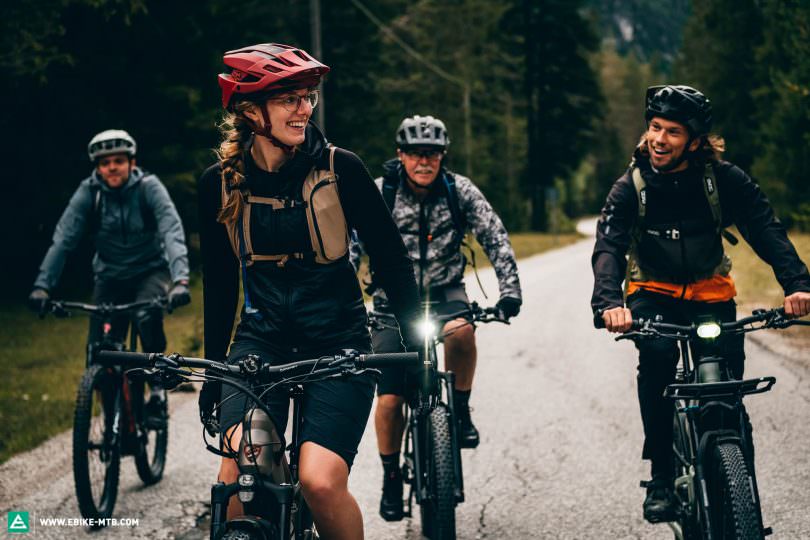
The status quo: me-too products and untapped potential
Surf the internet and you’ll come across Frankenstein-esque bikes in forums, Facebook groups and Instagram feeds. As users strive to adapt the bike to their personal needs, these bikes become removed from their original purpose. While on rare occasions they might have a redeeming clever feature, mostly they increase risk and have been overloaded with misfitting equipment or wildly pieced together componentry, adding all manner of features, from recklessly placed child seats to so many gadgets on the bars that the cockpit seems more Star Trek than sensible. Or maybe it’s the addition of a precariously placed bike lock or mudguards that adds nothing but risk to a full-susser. Don’t even start us on motor tuning. Often, such bikes are ridiculed, especially by industry insiders. But if anything, it’s not laughable – it’s just real life.
Because these bikes show us the way to the future. These cobbled-together constructions are a reflection of what a new audience wants and needs. Needs that are looking for a professional solution. Riders are changing. Once we were all young and wild, but as we grow up, so do our needs.
“I have back pain.”
“I’ve got kids.”
“My knees give me trouble.”
“I don’t want to use the car.”

Whether an issue is technically easy or difficult to solve, the core questions remain the same. We aren’t looking for a certain product, but for a solution to needs or issues. How can I keep doing what I love? How can I improve my quality of life? How can I have more fun? How can I share this excitement with my nearest and dearest? And deny it all you like, but one-upmanship is part of this. Don’t you want to be the one with the coolest and most stylish bike around?
Yet year after year we see many of the big bike brands churning out their stock answer: going lighter, more rigid, faster and telling riders to take this extra dose of performance and go ride with it.
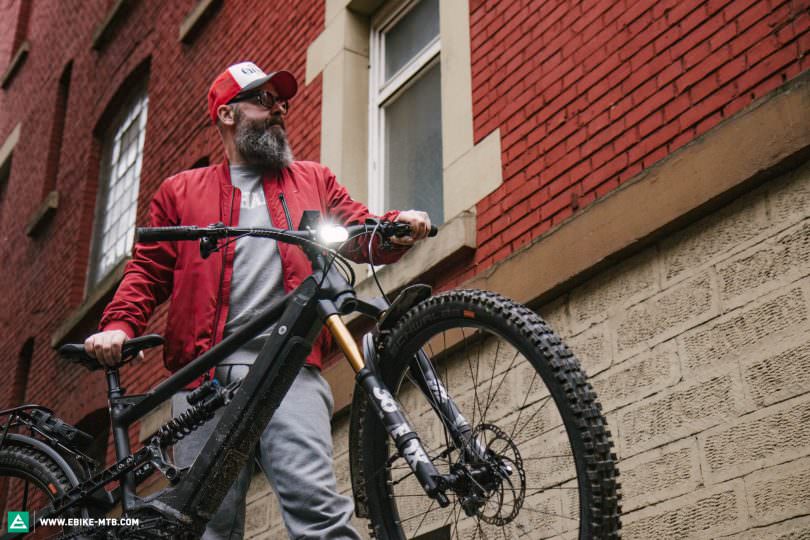
Is it us asking the wrong questions or are brands just not listening?
How can it be the case that in 2020, when all the signs of demand are so apparent, that the weight limit, trailer-mount suitability, integrated smart all-round solutions and user-friendliness are still critical issues for so many bikes? Ironically, we’ve seen images of bike developers on social media using child seats on models that are in no way approved for such an addition. Now don’t get us wrong: there’s definitely a market for performance-led eMTBs and these will always get their share of new models, but we also see the extent of the untapped potential for development in other fields! Riese & Müller are one of the few brands that worked out long ago how to cater for these needs and they’re rightly turning out to be one of the most sought-after names in the industry.
We’re gambling on our vision, and we would rather do that than make ‘me too’ products. Let some other companies do that. For us, it’s always the next dream. [Steve Jobs]
Instead of seeking out new audiences, most brands choose to focus their efforts on targeting the customers that have always bought their bikes: the conventional mountain biker. But new markets can be potentially lucrative, filled with excitement and inspiration. So what’s required to tap into them? A clear vision and a willingness to take risks by stepping away from me-too products.



Over the past few years eMTBs have made massive leaps in terms of trail performance. But look back at the roots of the eMTB boom and you realise that pro mountain bikers, ambassadors and adrenaline-hungry bike developers didn’t hold the reins. Instead it was the nameless first riders, the recreational, the less fit, who discovered the potential of eMTBs for their own purposes and laid the foundations of the sport.
The eMTB boom wasn’t driven by performance from the start. When Haibike and CUBE first brought knobbly-tired ebikes onto the market, there were no gnarly campaigns to go with them. These bikes, far less stylised than today’s, appealed to individuals who wanted a solution for their needs and saw it on the spec list. The ‘e’ in eBike translated into experiences and new possibilities that had previously been out of reach. That little ‘e’ brought riding back into common conscience among an audience where it had been close to disappearing. Now, the next generation of e-mobility is in the starting blocks and with it, a whole new generation of riders.
The E-MOUNTAINBIKE Theory of Evolution
Disclaimer: this theory hasn’t appeared out of the blue, but the time is now ripe. eMTBs are changing, adapting and developing. Some of the new bikes appearing are either exciting or bizarre, but one thing is clear: there are brand new categories emerging.
For a number of years, the acronym VUCA has been a bit of a buzzword. It stands for Volatility, Uncertainty, Complexity and Ambiguity and refers to the increasingly difficult conditions for those in management and product development. It was first used by the United States Army War College, referring to the multilateral world that was left after the end of the Cold War. In today’s world, changes in the environment are becoming more and more frequent, more rapid and more extreme, which prompts ever greater uncertainty as the future is so much harder to predict. In a globally connected world, just look at coronavirus, such complexity is almost unfathomable. As a result, facts are rarely clear-cut. There’s an innate ambiguity in everything, which makes it hard to reach a precise judgement.
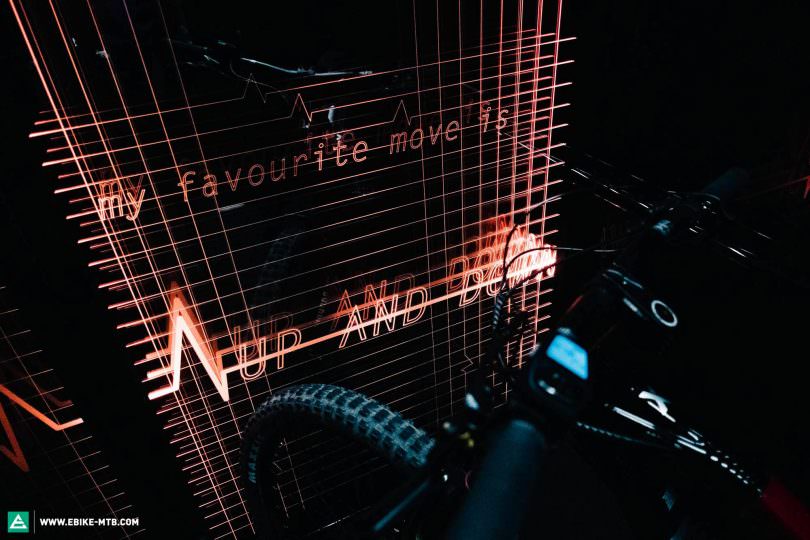
Developments in the bike industry are complex and at times fast-moving and volatile. To meet such diverse needs, wild creations emerge. The same series production pieces are used in all manner of ways. Clearly defined markets? Nah, no such thing now. The only recognisable constant is the steady emergence of new needs. It isn’t just clear in the coming-and-going of trends recently but also in the way that brands communicate.
Around 170 years ago, Charles Darwin talked about the survival of the fittest. While his theory is often misinterpreted and seen as a call for strength to survive, Darwin was in fact referring to the one who can best adapt to the conditions.

Communication channels between consumer and brand have never been so direct, but this potential is woefully neglected. For brands to develop, listening is the most economically viable and effective tool, but they continue to insist on the same old social media spiel, churning out one-sided brand awareness. Often, retail is all they listen to, without realising that sometimes it’s exactly retail where the prevailing dogma of eMTBs is so rampant, that is responsible for holding up their development. While engineers and test riders plead for forward-thinking features and components to satisfy real people’s needs, the sales department has a well-practiced response. “No. We need such-and-such technically superfluous or outdated component that helps sell our bikes.” The cliché of thinking outside the box is too often used by people who are trapped inside a plexiglass prism.
But stop for a moment. Would it really be too difficult to go to the customer first? What issues do you have with our product? What’s your primary use of our product? What do you want from our product and what issues can we solve for you?
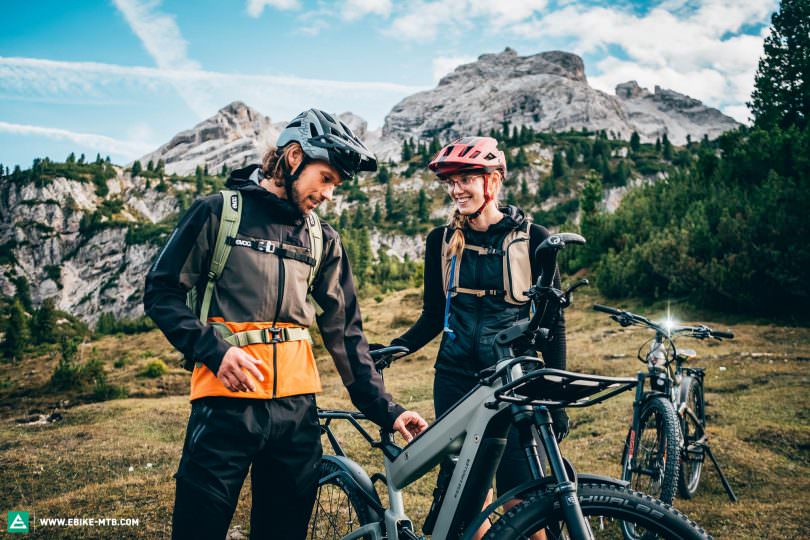
The solution for every problem often lies in the problem itself. Take the survival strategy of the VUCA world, reshuffle the acronym and what do you get? Vision, Understanding, Clarity, Agility.
In this VUCA world, the people in the lead are those that understand overarching trends and patterns instead of focussing on technical solutions and concrete details. This also means recognising the need to deliver brand promises and values to every field, no matter how diverse. Doing this involves seeing riders not as customers but as individuals and understanding their ever-changing list of needs and wants. Staying agile and listening won’t just make it easier to adapt, but helps build a clear vision to tread a new path and elevate the world’s experience on two wheels to the next level.
How to proceed from here?
The issue is that everyone wants something new and something better, but no one wants to part from their old, treasured things. It isn’t just material things that you become attached to but also the ideas that shape your world view, both on the bike and off it. Otto Scharmer’s Theory U sums up the complexities of the process. It begins with a blind spot, which almost all of us have to deal with when it comes to making decisions. This blind spot is a result of a lacking awareness of where our attention and intentions originate from inside us, the source. Throughout Theory U’s 544 pages, Scharmer provides instructions on how to open up our minds, our emotions and our will to adopt new things, ultimately putting ourselves in a position to recognise future potential that is materialising in the present. His theory also illustrates the number of levels on which we can be closed to new things and changes. It’s truly eye-opening for those of us who think we are already open-minded. According to Scharmer, open-mindedness is key in all walks of life: it’s the only way to recognise the potential future that is already here in the present and not only react to new trends, but also shape them at an early stage.

Jeder will etwas Neues und Besseres, aber niemand möchte sich von dem Alten und Sicheren trennen.
The development of eMTBs is anything but linear. Disruptive technologies and new user groups result in giant leaps of development which are quick to be recognised and understood. This is where new categories emerge, with hybrids that are sometimes radical and impressive and at other times irritating and confusing as hell.
Right now there’s nothing more pressing than to resolve the conflict of interest between brands, product development and trade. What’s missing is not creativity, but space. Space for listening, understanding and change. By finding this space, we’ll be in a better position to create a future with solutions to current problems. What does this mean for the bike industry? The ebike and eMTB boom demands empathy, visionary strength and the ability to put oneself in the place of new target markets, user scenarios and perspectives. For brands, it won’t be enough to simply do the one thing well that they’ve always done for years.
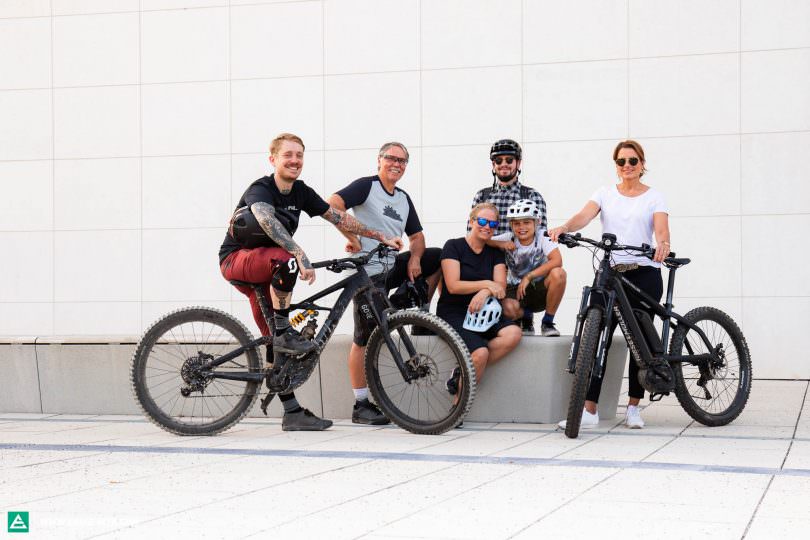
With the often contradictory developments on the eMTB market, it’s clear that the field is wide open when it comes to new directions and audiences. There are new chances, new tasks and new challenges ahead. Users and their needs expand in sync with the development of new bikes. We’ve already witnessed how ebikes are conquering tourism, urban mobility and, in recent years, the performance-focused mountain bike segment too – across all generations. The newest ebike trends are illuminating the hybridisation of already hybrid bikes. We have spared no effort when it comes to documenting the progress and potential of all of these, including step-through and off-road cargo bikes, eSUVs and light eMTBs. To preemptively and exhaustively try out all the trends, we mobilised friends and acquaintances, family members, parents and grandparents, including a new mum with a one-year-old, a buddy with a leg injury and our 83-year-old grandma. Somewhat against the grain, we also took part in this human experiment, accepting the side effects of fun, new experiences and eye-openers graciously.

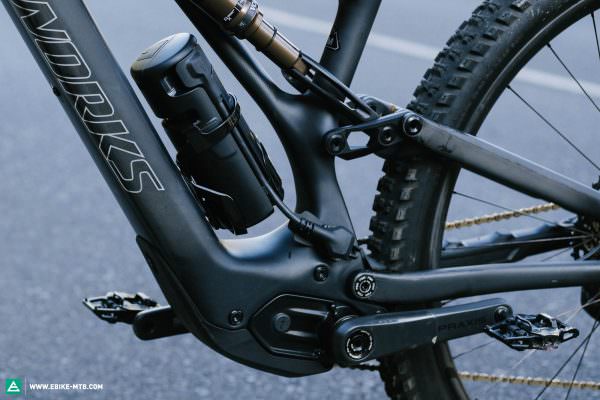

In this issue, we have all the facts and details you need to know about the emerging eMTB Light category. What’s behind the concept of lightweight eMTBs with lower levels of assistance and why are these bikes so revolutionary? In addition, you’ll find a group test of three of the most exciting Light eMTBs currently available.
The fun continues with a look at knobbly-tired step-through bikes. What is this new generation of step-through eMTBs capable of? What should I look for? In our off-road step-through group test, we compared ten of the hottest models of 2020 to find their strengths and weaknesses and figure out the best option for you.
On this note, let’s throw caution to the wind and try it all out, experiment, report back and discuss. Together we can do great things and help shape a better future.
How do you eMTB? What hopes have you got for future products and what problems do you think need solving? Send us an email with your thoughts.
Words Robin Schmitt
Photos Robin Schmitt, Christoph Bayer
Illustrations Julian Lemme
Further articles in the series cover the era of E-SUVs, the new handling of Light eMTBs, the potential for off-road cargo bikes, our off-road step-through group test, connectivity and software solutions, the new generation Z and our guide to passing on your bike passion to your kids.
Did you enjoy this article? If so, we would be stoked if you decide to support us with a monthly contribution. By becoming a supporter of E-MOUNTAINBIKE, you will help secure a sustainable future for high-quality cycling journalism. Click here to learn more.








